Piers Berry, on Starting Microbrand Pinion and Doing the Little Things Right
Launched in 2013 at SalonQP, Pinion has spent the last six years quietly cultivating a devoted following across the globe.
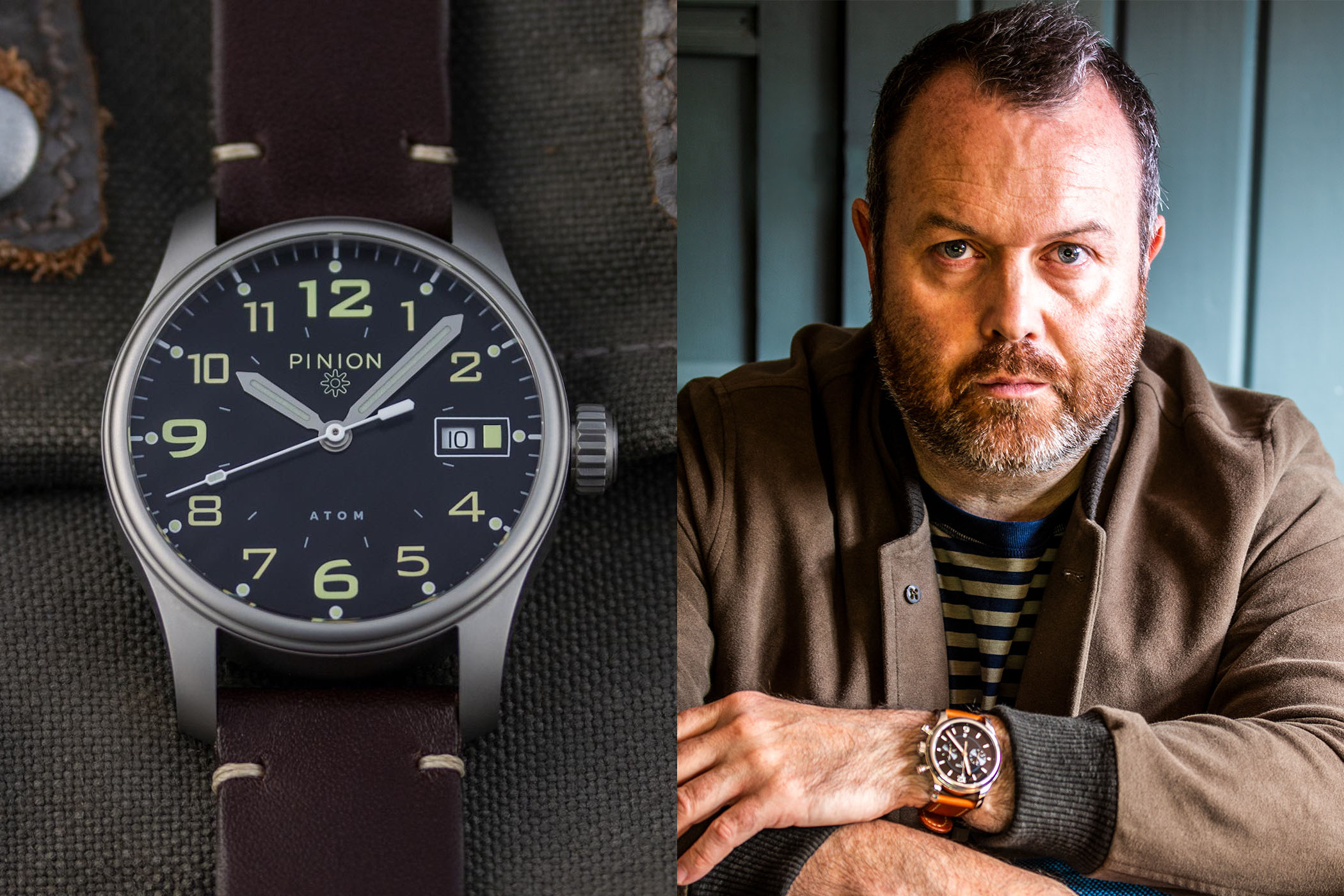
Piers Berry’s passion for watches came later in life but he’s been making up for lost time ever since. Founding British microbrand Pinion in 2013, Berry has used his considerable expertise in digital design to create a relatively simple product range that values clarity over complexity and gives meticulous attention to detail to every aspect of a watch. From the dial to the case, to the strap and the Swiss movement inside, it’s all about trying to do the little things just that little bit better. We spoke with Piers recently to learn more about his background and some of the challenges he’s faced launching a brand from scratch.
MONOCHROME – Tom Mulraney: What is your earliest horology-related memory?
Piers Berry: When I held my grandfather’s pocket watch at a young age…No, seriously it was when I was about seven, watching Roger Moore as James Bond in A Spy Who Loved Me with his quartz Seiko watch. I was astounded by the ticker tape messages informing him to report back to HQ. The first smartwatch I reckon!
As a child of the 1970s, I grew up in an age where new technology and science fiction films inspired the world. This digital revolution was also responsible for the decline in traditional mechanical watches, and due to this, I guess I never formed an interest in mechanical watches until the 2000s when I was in my 30s.
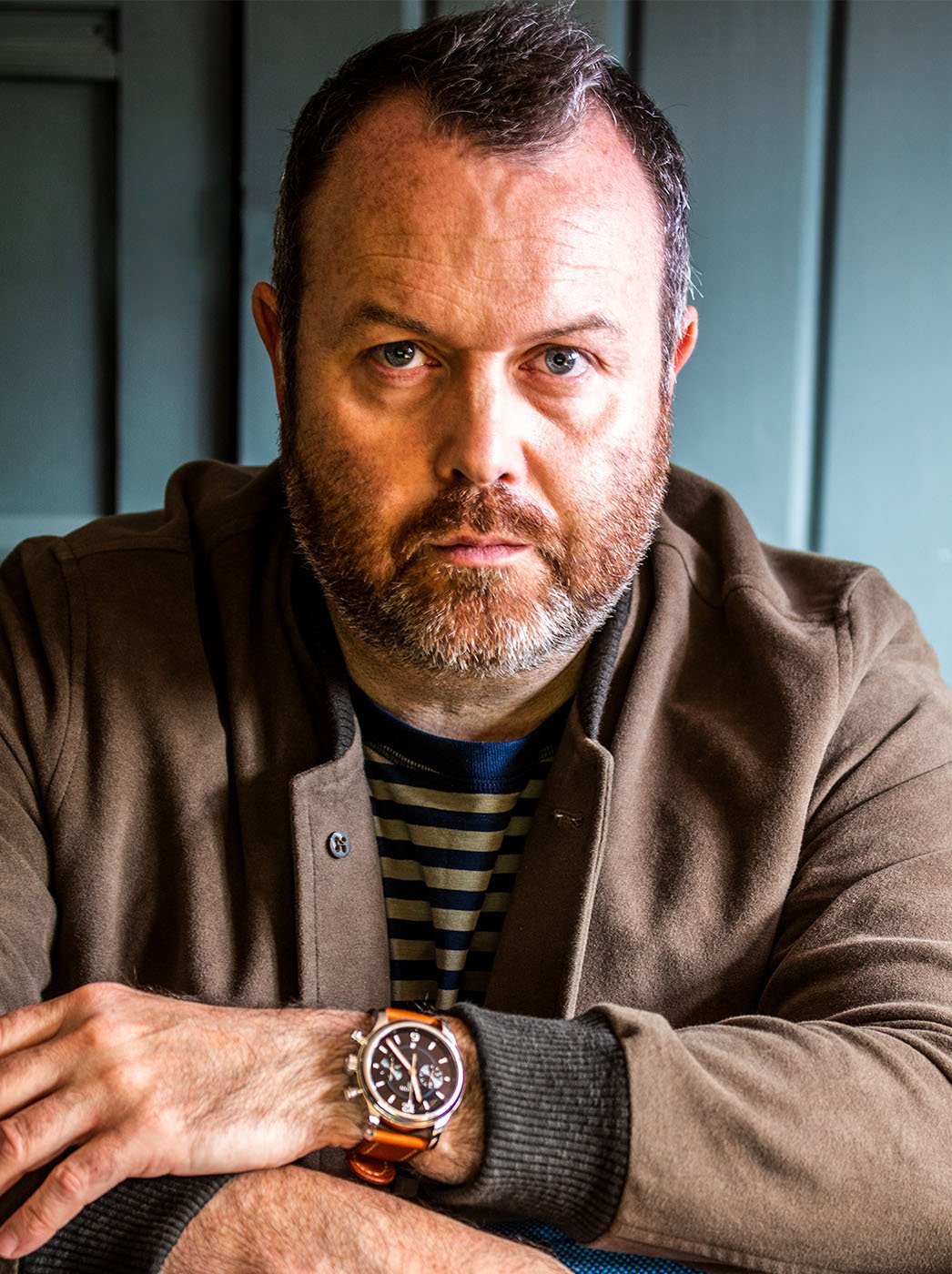
How did you first get into the watchmaking business?
In the late 2000s, my passion for watches grew beyond merely collecting and wearing them, this manifested in two independent fan forums that I created for Bell & Ross and a young company that was local to me, called Bremont.
It was around 2012 when members of the Bremont forum requested a special edition watch. Bremont agreed to this, so I worked with them to produce the ‘ALT1TUDE SE’ which was limited to 30 pieces.
I was solely responsible for promoting, retailing and engaging with the customers for the release of the watch; it was a huge success with nearly all watches sold within 24 hours.
I got such a kick out of the whole design and product launch process that I just knew I had to do something for myself. However, this would mean making some sacrifices, such as leaving the digital agency I had co-founded with friends and cutting ties with the watch brands I engaged with.
Before I even started designing anything, the first thing I did in April 2013 was book a stand at SalonQP for November. This meant I had to create, brand and manufacture a watch in just over six months! And yes, it was the most stressful six months of my life.
What has surprised you most about the watch industry so far?
The amount of money you have to spend versus what you make from sales. For every product you make and sell you have to put some by to keep going. For the first three years, virtually all money earned from sales was pumped back into movements and manufacturing. When you only commit to doing 50 or 100 items at a time, the cost per unit increases massively, but it gives you the flexibility to change and evolve models more quickly.
Secondly, from a manufacturing point of view, I’ve seen a significant change in the past 2-3 years where the more traditional companies have disappeared because the demand has changed and they have not evolved with the times. As a designer, I don’t want to wait 14 days for a technical drawing sent as a scanned copy, which means I cannot translate it into CAD for 3D visualisation. There are still so many of these traditional manufacturers around now, but in ten years, who knows?
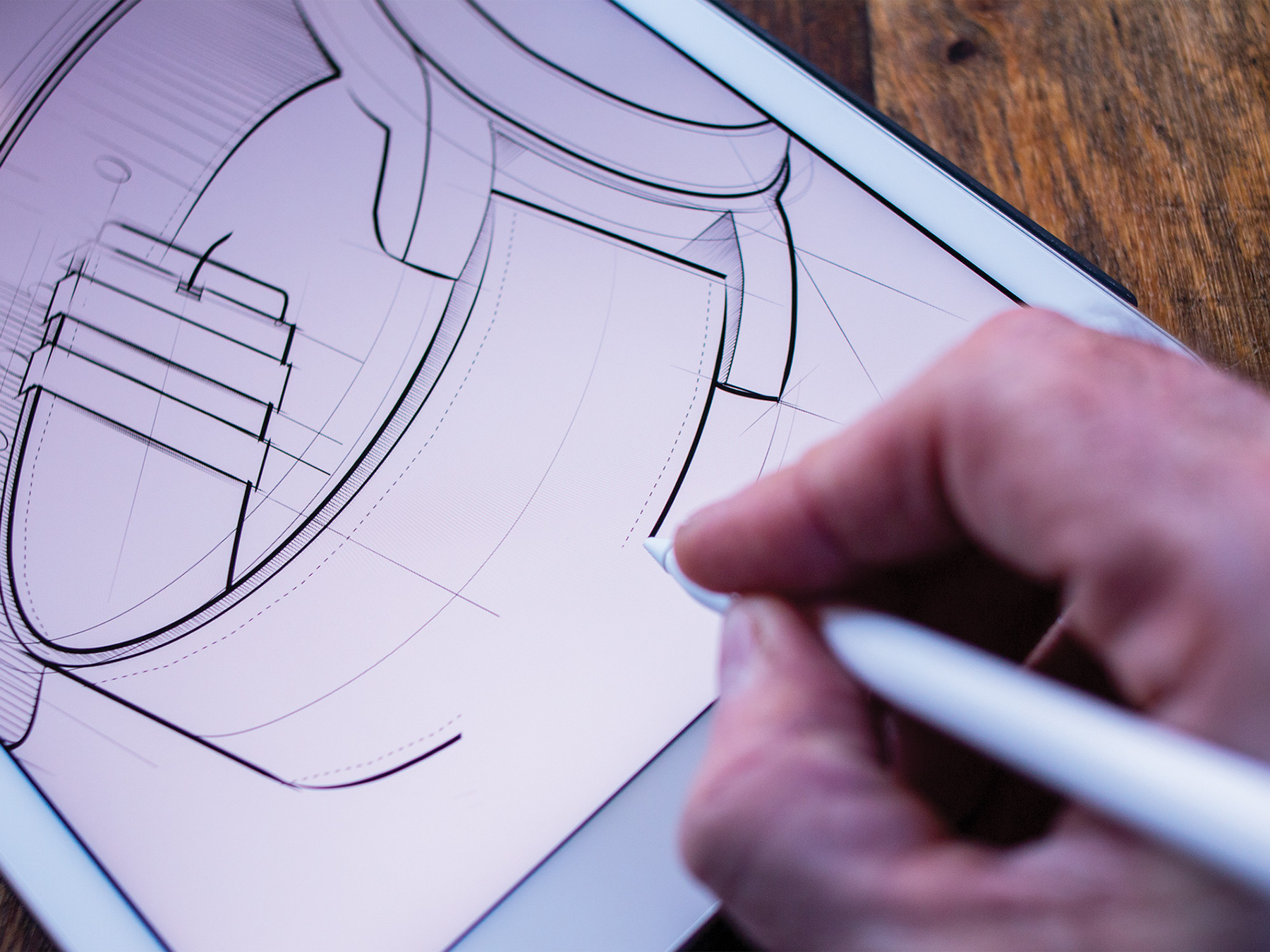
How challenging has it been to create and establish a brand from scratch?
The design of the brand was a fun challenge. I didn’t want to use my name for a start but wanted a term related to mechanical devices, so Pinion fitted perfectly.
The biggest challenge to date is that Pinion is a brand with no real heritage or elaborate back story. I’m not fortunate enough to have inherited a family-owned brand name or have some significant event propel me into making watches – I’m a designer who has a passion for crafting things and engaging with people, so ultimately Pinion as a brand has become an extension of myself.
What I keep reminding myself from time to time is that every brand at some point has been where Pinion is now, and the brand’s own history is made as it continues to evolve.
What are some of your proudest achievements?
I still feel quite proud that I was able to go from nothing to launch in six months. Also, to sell GBP 2,000 watches to a global audience, who back in 2013 had never seen the product and from a company that had just started, was quite an achievement.
Finally knowing that people are simply wearing and enjoying the fruits of your labour is something I’m really proud of.
How would you describe a Pinion client, what do they value and why do they choose Pinion?
Firstly, they have an eye for good design (laughs).
No, seriously they are mostly male, between the ages of 35 and 50 and situated either in the UK or USA. It’s probably a similar demographic for a lot of other brands, but these people value having something uncommon, different but still is attractive and practical to wear. They value legibility and simplicity.
They choose Pinion primarily on the looks with most never seeing the product until they unwrap it. They are trusting and value engaging directly with the brand rather than merely purchasing something in a store.
…And we do have a few people whose surname is Pinion. So that’s just about them getting their name on a watch!
What sets Pinion apart from its peers?
The range Pinion offers; whether that’s a GBP 800 entry-level mechanical watch, through to a GBP 5,000 collectable piece with a new-old-stock vintage movement. I don’t think there’s another British watch company that currently has this variety in its collection.
What’s the process of introducing a new model?
Firstly, I have a roadmap planned. This backlog of models is prioritised based on movement stock I have or something I want to bring to the market. Then sometimes I will have a new idea for a new model, and it will go straight to the top of the backlog delaying everything else.

An excellent example of this is the original Atom watch I launched in 2017. Top of the backlog for that year was the TT (Titanium GMT), which had been on the roadmap since 2014. I had already manufactured the cases and purchased the movements, but I saw an opportunity with the Atom (a more affordable watch) and so put this into production instead. By the time I finished the TT in 2018, the Atom was all sold out. So, it’s quite an agile process. Being small and in 100% control means I can make those decisions.
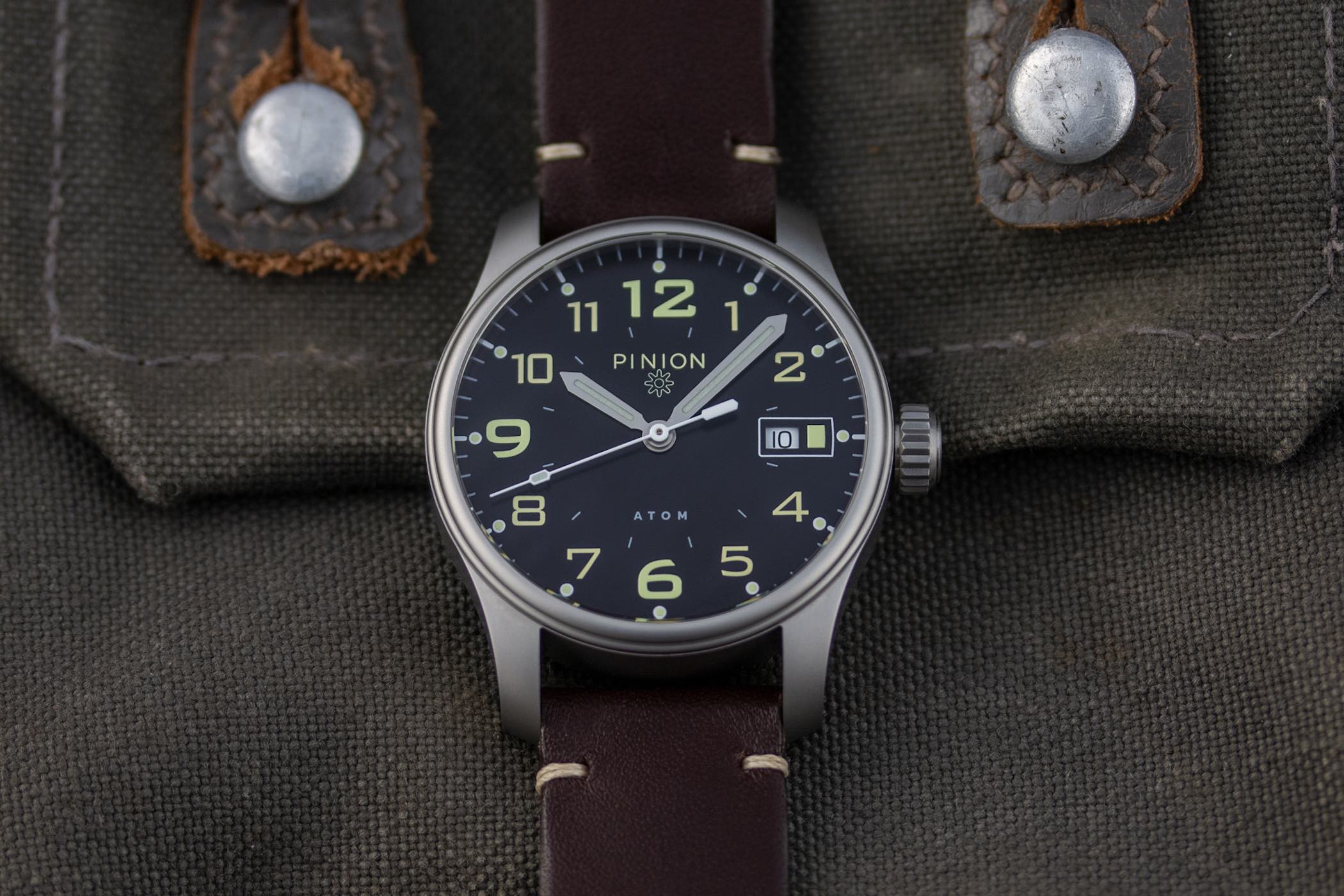
Whereas a lot of the industry likes to keep everything secret, then do a big presentation, I tend to engage with people about upcoming models. So, for example, when I launched the 39mm Atom (a follow up to the 2017 model), I did online research to determine what people wanted. The feedback I received influenced the format of the watch. In this case, the majority of people wanted to see an ETA 2824-2 white dial variant on the model, so I made it and it’s currently outselling the more commercially friendly black dialled Atom.
How difficult is it to compete in a crowded market where larger brands benefit from healthy economies of scale and huge marketing budgets?
In a traditional marketing sense, you have no chance with anything editorial, print or advertising. The press is not interested in featuring you because Pinion doesn’t have an elaborate story, heritage or paid advertising. On the off-chance you do get a feature, then it’s a bonus. However, I tend to find advertising is misleading anyway as people viewing it have the expectation that you retail in a store, which doesn’t work for Pinion.
Pinon manufactures in low volume; I’m not interested in shifting box loads of watches as I feel it would go against why I started in the first place. Put it this way, if I didn’t sell a single watch for the next six months, it wouldn’t have an impact on the business, and so, there is less of an incentive to throw money at marketing.
Also, watch blogs have become increasingly more difficult to engage with. When Pinion launched in 2013, I got lots of coverage. Now that the top blogs have become more commercialised, most aren’t interested. I had a watch review last year that took nearly three months to be published, by then most of the watches were almost sold out and that was really frustrating because you have an expectation it will be done quickly.
However, there are a couple of things that I do, which start to make an impact. Firstly, I do optimise my site for Google. I’ve been consistently in the top 3 for the past couple of years when searching for ‘British watches’. This means a one-person band can level with a much larger organisation. Because of this, people perceive your company as bigger than you are, when in reality, Pinion is me working part-time (as I still do design consultancy) and two watchmakers that I use for assembly.

Finally, I’ve been working with several film companies over the past year. This means getting Pinion worn by actors on TV or in movies. There’s a BBC series coming out later this year where two leads – both female and male – wear Axis II watches, and two feature films. One of these will arguably be one of the biggest movies of 2020, which will undoubtedly give Pinion some attention on a global level.
How do you find new customers and educate them about what you’re doing?
I did quite a few informal gatherings during 2015 and 2016 which worked well, as I was able to tell them my story and show the watches, but I stopped doing it because I didn’t have the time to dedicate to it and I rarely have time to do events like SalonQP.
Nowadays, I tend to let customers find Pinion through their research, whether that is Google, a blog, forum, or so on. I do always intend to spend more time being more active, but for the moment, I enjoy what I am doing, and that is the most important thing.
More details about the watches and the brand at pinionwatches.com.

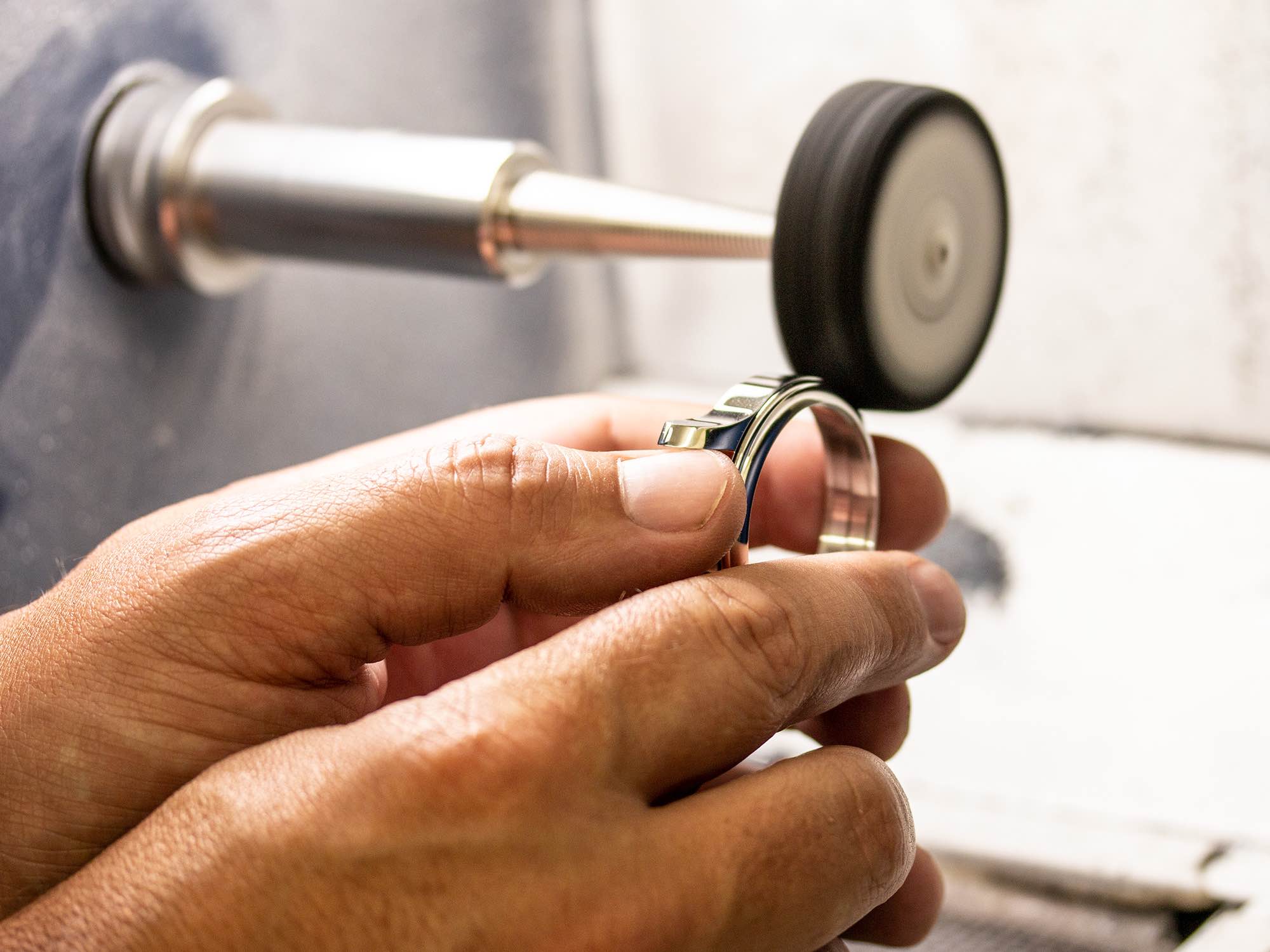
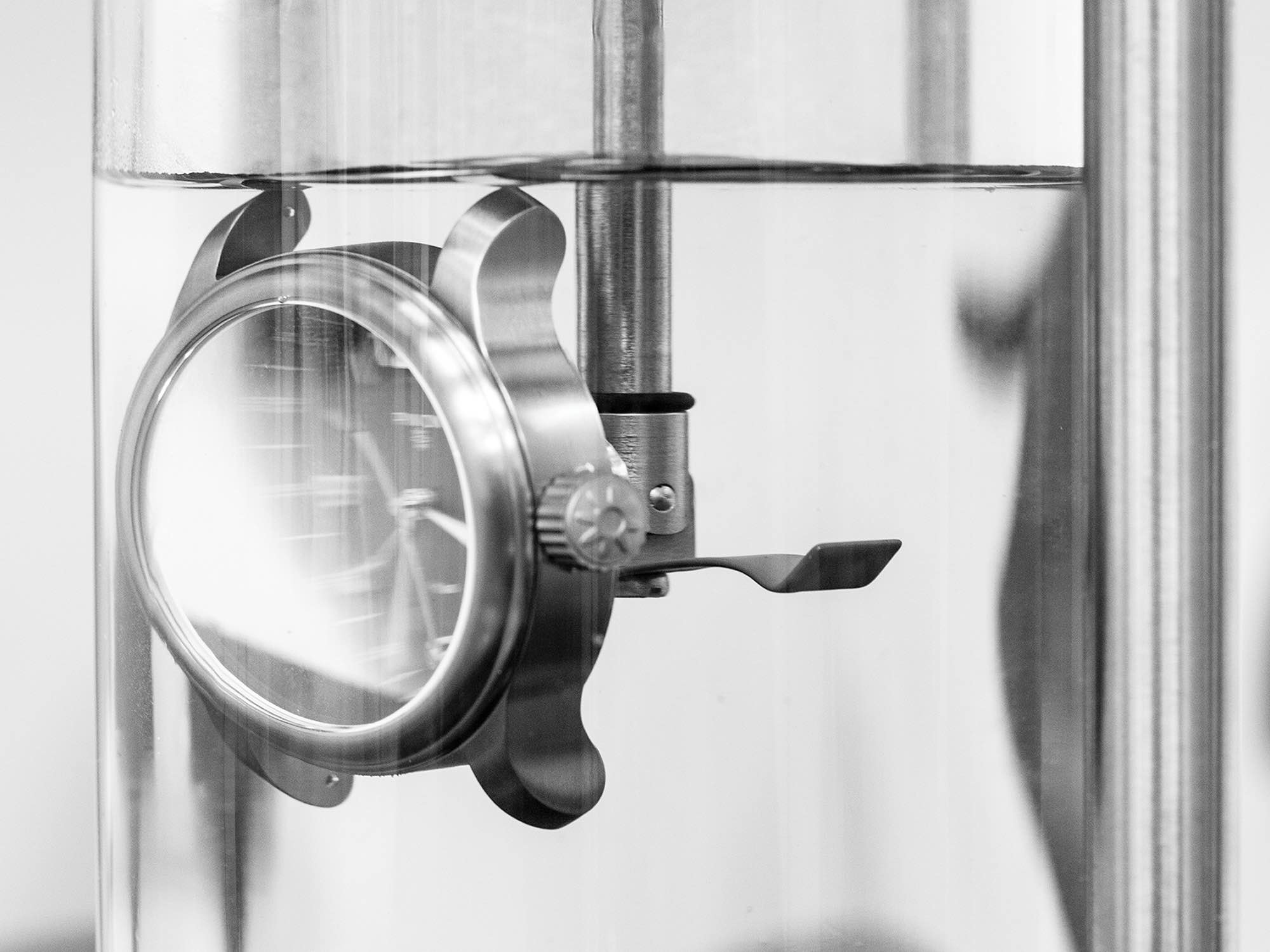

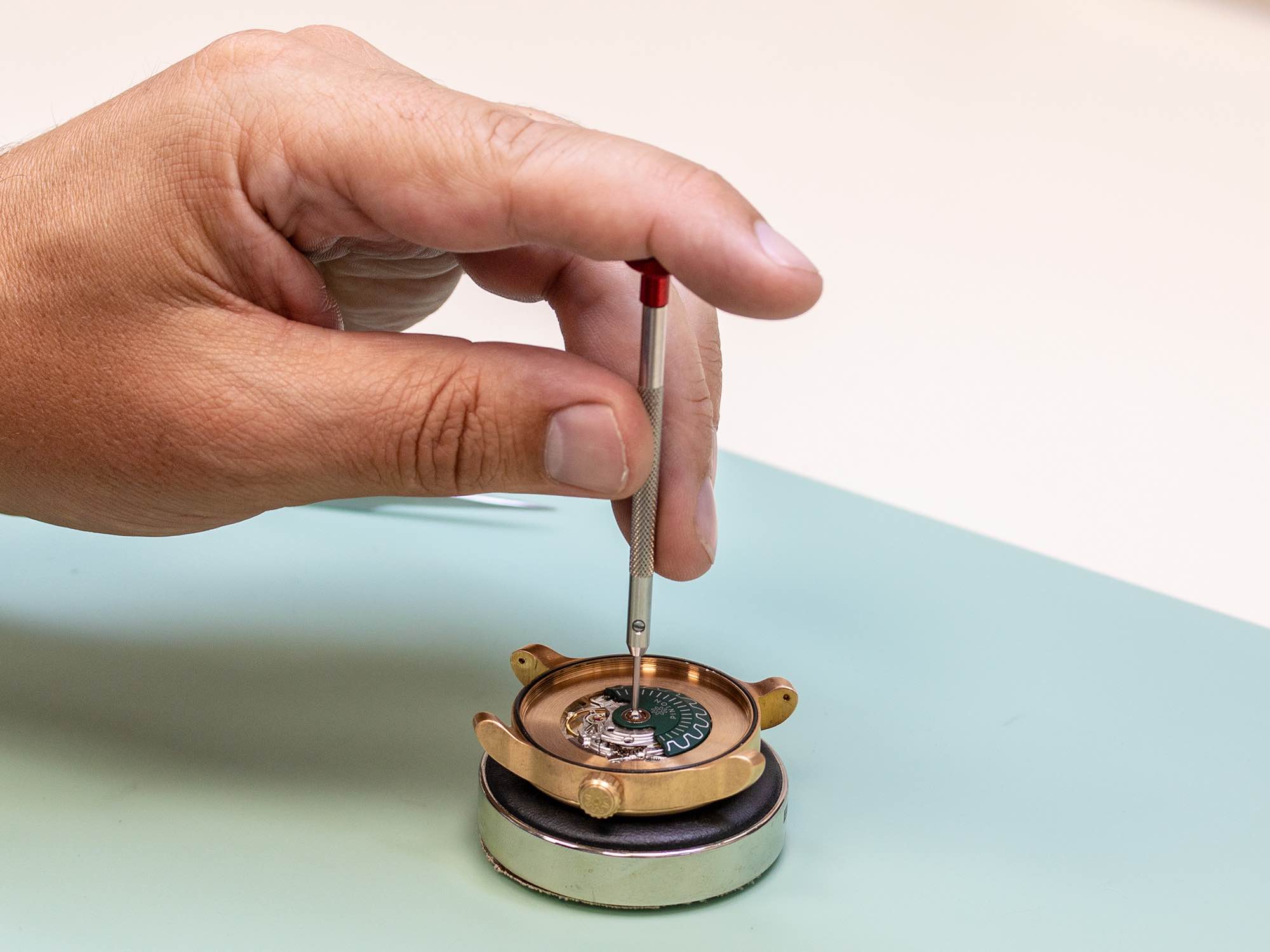
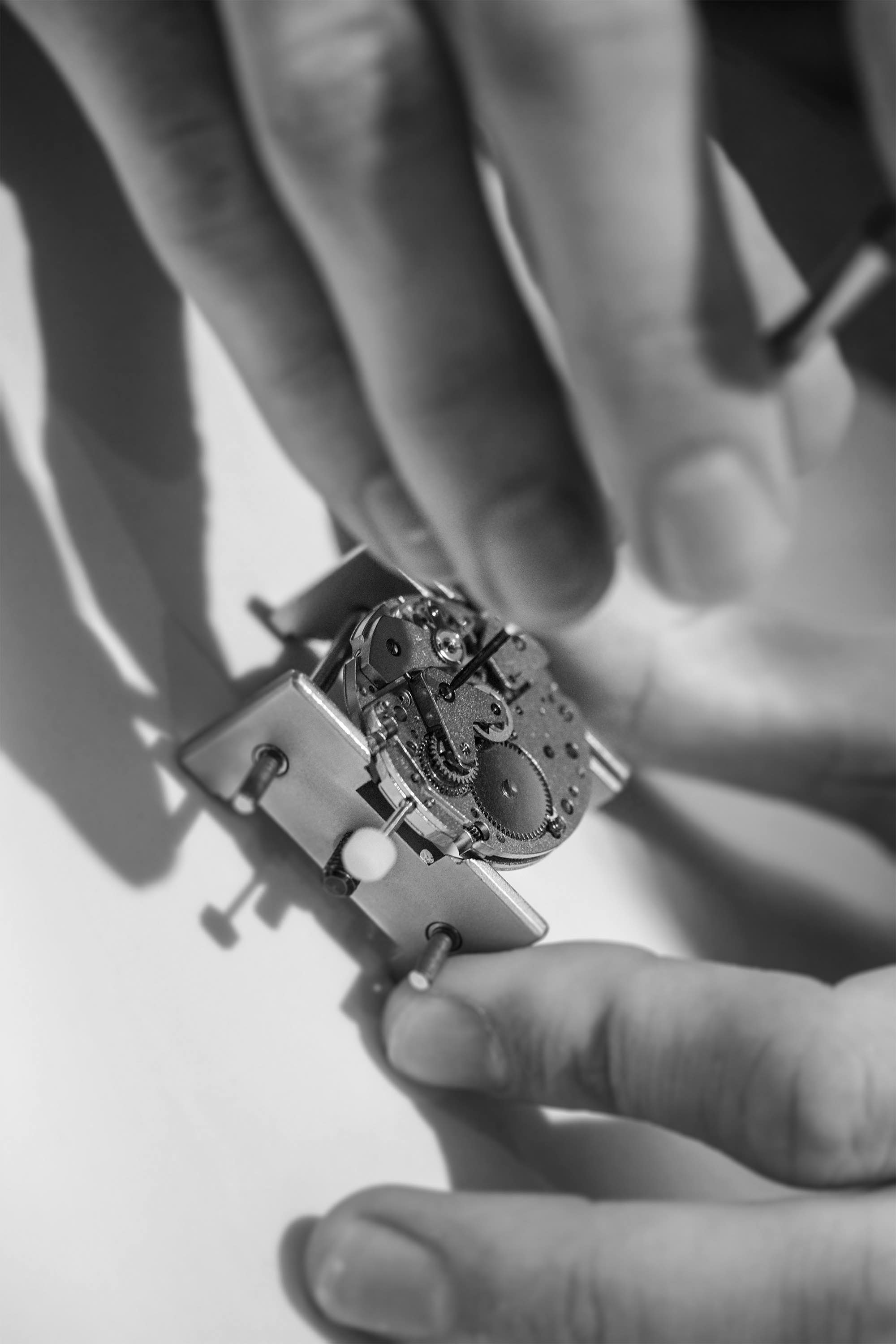
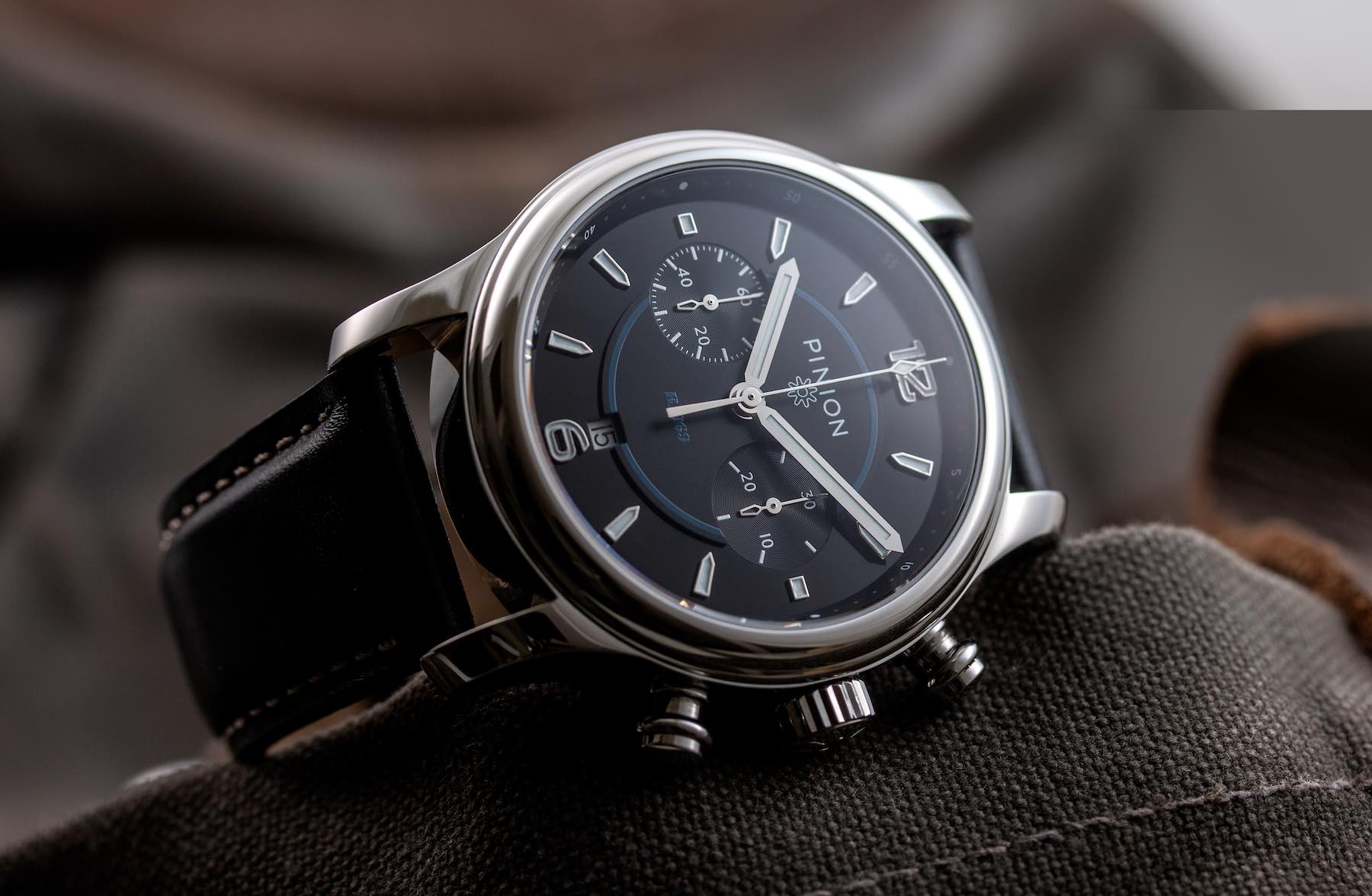

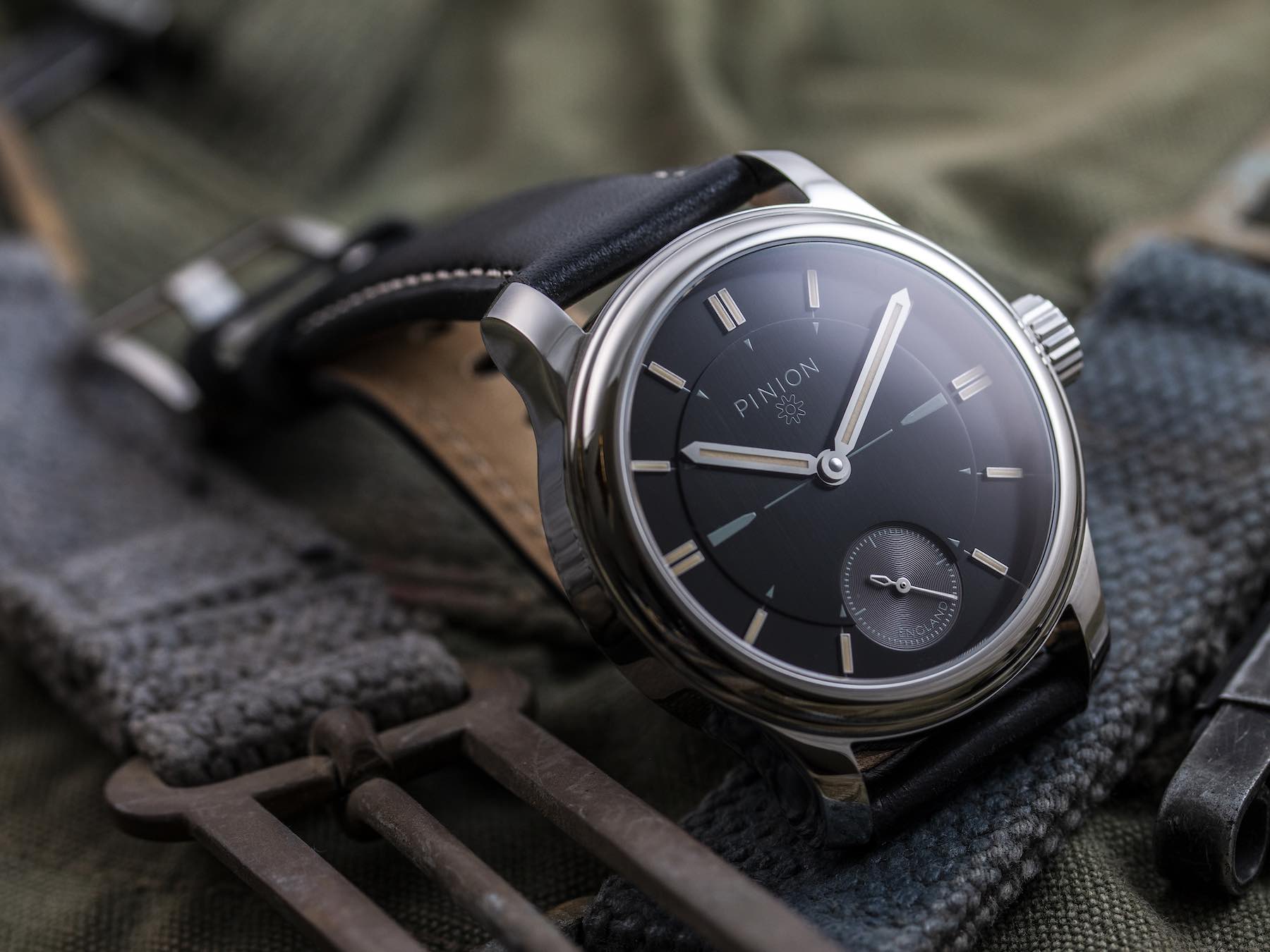
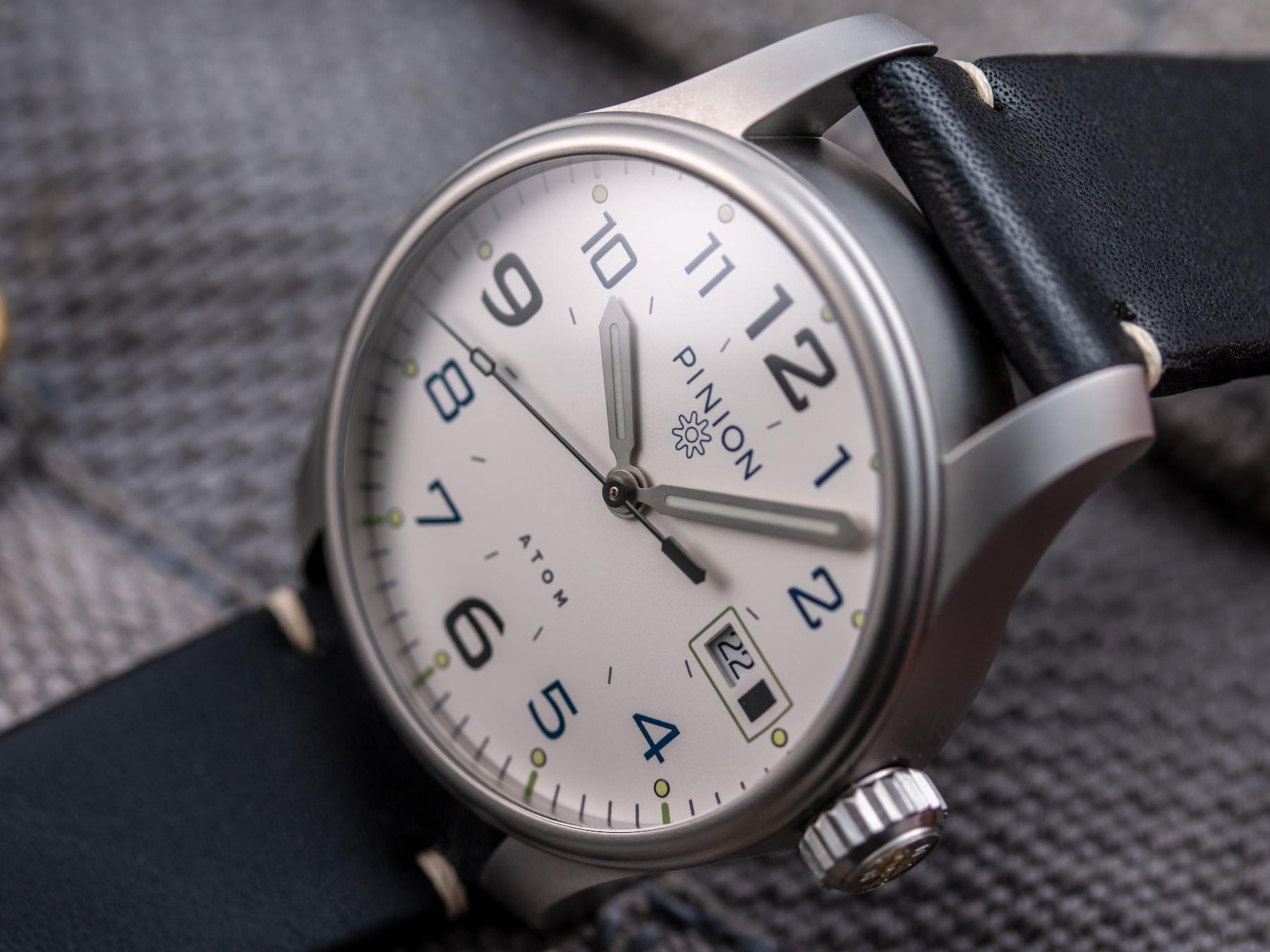



4 responses
I liked the look of the Pinion TT Anthracite watch (42mm, titanium GMT watch, powered by ETA 2893-2 movement), but at the price range he’s asking there are many other choices (with heritage and legacy attached). I wish him luck though.
Microbrand with this kind of prices? No, thank you…
He is correct about the white 2824, looks good
The prices seem ok to me, I assembled a white faced 2824 from off the shelf parts, took ages to find the bits and cost close to £400 so someone using their own case and doing a professional job and getting a profit out of it is not being greedy.